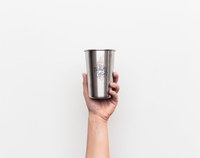Prairie Fare: How clean is your coffee cup or water bottle?
(Click an image below to view a high-resolution image that can be downloaded)
“Mom, don’t lose this,” my older daughter said. “It was expensive.”
I had opened my gift, and I was admiring my shiny stainless cup with a tight lid. It could keep hot beverages hot and cold beverages cold.
This cup is special, and I have had it for several years. She bought it with her own hard-earned money from one of her first jobs. It is at my desk all the time, unless I leave it somewhere.
Unfortunately, I have misplaced the cup at least three times. One time, I lost my cup for a month. I found it, exactly where I left it. I was relieved.
I planned to track down an identical replacement cup in the hope that she would not notice.
If you know my daughter, don’t tell her I have ever lost the cup.
I bring my cup home every night and wash it with the dinner dishes. I fill it every morning with hot coffee as I leave for work. Then I fill it with cold water. This beverage receptacle does a good job keeping me hydrated.
What would happen if I left my cup or a water bottle at work and only washed it once in a while?
In my many years in offices, I have seen some scary looking cups with moldy dried-on beverages.
Several years ago, researcher Charles Gerba with the University of Arizona did a study of coffee mugs in offices. His research showed the presence of bacteria linked with diarrhea, and viruses linked with colds and flu. About 90% of the cups were contaminated with germs of some type.
As many as one in five cups were contaminated with fecal bacteria. By the way, bacteria can be transferred to surfaces from unwashed hands after an urgent trip to the restroom. The germs can find their way from the cup to your mouth when you eat a snack.
In offices, you might share cups in a common cupboard. If the cups are not thoroughly washed, germs can live on the cup.
Using sponges in a workplace community kitchen to clean the community dishes also can cause contamination. Sponges can be “germ hotels” with many rooms.
As we continue our kitchen tour, be aware that the water reservoirs in coffee makers can be a place where mold and other germs can thrive.
What can you do? As our common sense would tell us, wash your cups, dishes, silverware and coffee carafes in hot, soapy water followed by a hot water rinse every day. Let them air dry.
If you want to sanitize dishes, follow the bleach manufacturer’s directions. Too much bleach is not good for your health either, so properly dilute bleach with water.
If a dishwasher is available and your cup is dishwasher safe, use the dishwasher.
If you are grabbing a cup from the office supply, and you are unsure of its cleaning history, wash it before using. Use a fresh dish cloth to clean the cup.
If your cup has a lid to hold in heat, be sure to wash the lid thoroughly with hot, soapy water. Get under the gaskets and in the crevices. Even better, run it through a dishwasher if it is dishwasher safe.
If your cup is stained, the American Cleaning Institute has further advice. Fill the cup with boiling water and add two spoons of dishwashing detergent and soak overnight. If that doesn’t work, mix one part of dishwasher detergent, three parts water and a little white vinegar. Allow to soak an hour. Scrub with a cleaning pad.
Another group tried five methods to remove stains from cups. They used denture tablets, abrasive cleaners or a paste of baking soda mixed with water, among their options. The baking soda paste worked the best. Be sure to rinse your cup thoroughly.
If you have a reusable water bottle, the same cleaning rules apply. Microorganisms can get into your reusable cups and straws. Germs grow in the warm, moist environment, so be sure to clean your water bottle and reusable straw, if present, daily.
We don’t live in a sterile environment, but who wants to ingest extra bacteria or viruses that could make them sick?
Here’s a pick-me-up to enjoy in your “spic and span” cup. Remember that the addition of protein- and carbohydrate-rich ingredients in this recipe makes cleaning your cup even more important. Bacteria like to grow in the presence of these nutrients.
French Vanilla Coffee Mix
1/3 cup instant coffee
1 cup instant skim milk powder
½ cup powdered nondairy coffee creamer
1/3 cup white sugar
¼ cup French vanilla instant pudding mix
Add the ingredients to a food processor or blender. Put the lid on tightly, then pulse until thoroughly mixed and you have a smooth powder. Store the mixture in an airtight, 2-cup container.
For each serving, place 3/4 cup of boiling water in a mug and stir in 2 heaping teaspoons of the mix. For a large cup, increase the proportions.
Makes 16 servings. Each serving has 50 calories, 1 gram (g) fat, 2 g protein, 10 g carbohydrate, 0 g fiber and 65 milligrams sodium.
(Julie Garden-Robinson, Ph.D., R.D., L.R.D., is a North Dakota State University Extension food and nutrition specialist and professor in the Department of Health, Nutrition and Exercise Sciences.)
NDSU Agriculture Communication – Jan. 25, 2024
Source: Julie Garden-Robinson, 701-231-7187, julie.garden-robinson@ndsu.edu
Editor: Elizabeth Cronin, 701-231-7881, elizabeth.cronin@ndsu.edu




